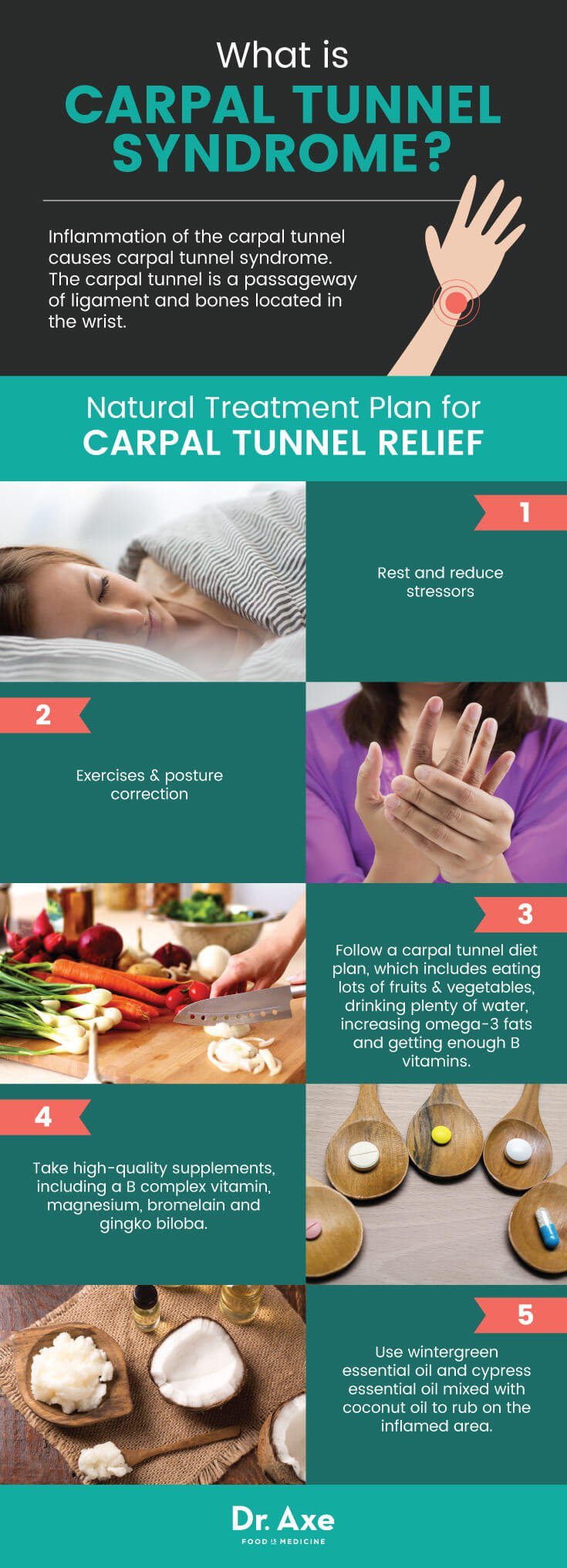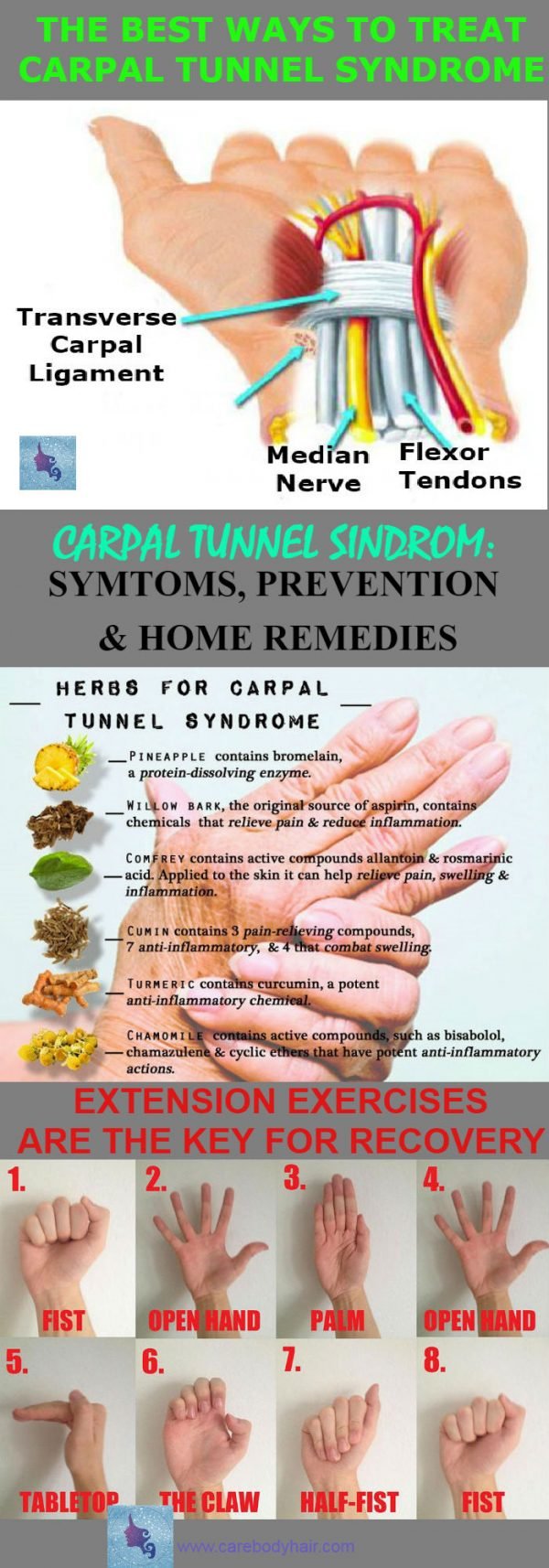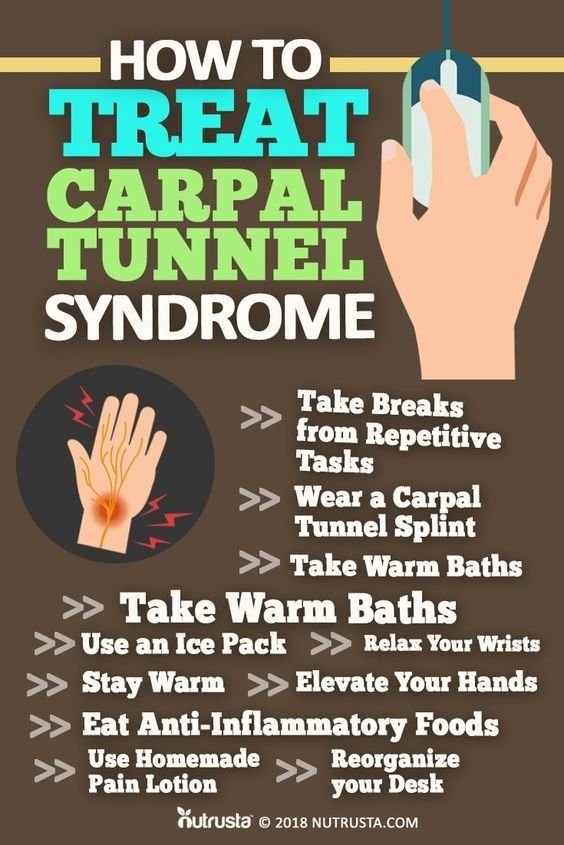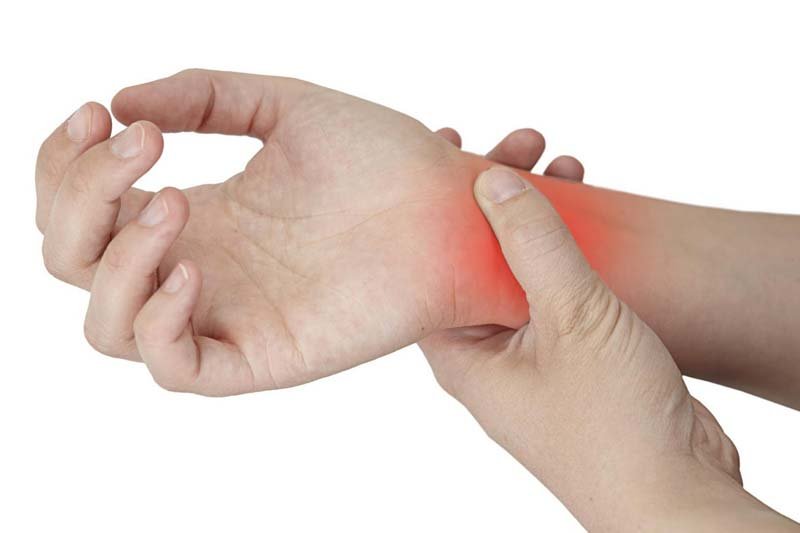What Women Should Know About Carpal Tunnel Syndrome: Did you know that women are three times as likely as men to develop carpal tunnel syndrome? If wrist and arm pain are impacting your workout routine, don’t miss this essential guide to carpal tunnel with tips for treating it at home and working out:
What is Carpal Tunnel Syndrome (CTS)?
As a form of tendinitis, carpal tunnel is actually a result of irritated and inflamed tendons pinching a nerve in your wrist. The median nerve, to be specific, runs the length of your forearm all the way down to your hand.
On the thumb side of your wrist, the nerve passes through a narrow channel composed of bones and ligaments called the carpal tunnel. When the tendons surrounding the carpal tunnel (or their linings) become swollen from overuse or injury, they can compress the nerve resulting in symptoms including:
- Pain
- Tingling
- Weakness
- Numbness
- Tenderness
These sensations will typically be felt in the wrist, thumb, palm, and first three fingers and may even radiate up the forearm.
Risk Factors for Carpal Tunnel Syndrome
As mentioned above, sex is a major risk factor for carpal tunnel because statistically, women have a much higher chance of developing it. Why is that? Many researchers believe that women have natural anatomical differences from men including narrower carpal tunnels. This alone precludes them to higher incidence rates of developing CTS.
Additional risk factors include:
- Age – CTS usually only occurs in adults
- Diabetes – adults with metabolic disorders like diabetes are more susceptible to nerve dysfunction which can result in compression as you see with CTS
- Job – if your job requires the use of vibrating tools or repetitive manual labor that frequently involves the wrist, like assembly line work, sewing, or meat packing, you may experience more consequences from overuse
- Wrist fracture or dislocation – injury to the wrist can result in inflammation that impacts the carpal tunnel and the nerve which runs through it
- Obesity – carrying around excess weight always places extra pressure on critical joints including the wrist
- Pregnancy – the fluid imbalances which happen with pregnancy (and sometimes menopause) can contribute to developing CTS
- Arthritis – rheumatoid arthritis sufferers especially may experience CTS symptoms from inflammation in the hands and wrist associated with their condition
Treating Carpal Tunnel Syndrome
Traditional methods for treating CTS largely follow basic tendonitis guidelines:
- Rest – avoiding use of the injured wrist will be your quickest way to promote healing and limit discomfort
- Splint/brace – orthotic aids like wrist braces can help stabilize the joint so as to avoid motions which exacerbate the condition
- Medicine – over-the-counter anti-inflammatories can provide assistance with pain and inflammation
- Injections – your doctor may prescribe stronger medicine or injections of corticosteroids that fight inflammation on a stronger level
- Alternative methods – some studies have shown that alternative treatments like chiropractic care and acupuncture can have a significant impact on CTS symptoms
In severe cases where long-term nerve damage is suspected, doctors may do surgery to actually sever a ligament in the wrist and relieve pressure on the carpal tunnel. For a list of more thumb, hand, and wrist injuries that might be causing your discomfort, click here.
Working Out with Carpal Tunnel Syndrome
While CTS can be painful, there are ways to successfully manage symptoms and still keep up with your workout routine. If your CTS is the result of an underlying condition like diabetes or arthritis, it is critical you work with your doctor to address those medical needs first. If your CTS is a result of overuse in your job, you will want to navigate fitness routines that limit stress on your wrist (i.e. modify your strength training regiment).
Experts recommend that people suffering from presumptive CTS always consult a medical professional who can make a comprehensive diagnosis and talk to them about their exercise plans. Wearing braces or splints, especially while lifting weights, can also help stabilize the area and prevent excessive motion that makes the CTS worse.
You can do wrist and hand-specific exercises to help boost blood flow to the injured area as well as stretch and strengthen surrounding soft tissues to support a quick recovery. These exercises include repetitions of simple movements like:
- Touching the tip of each finger to your thumb (to form a ring shape)
- Clenching a tight fist and then opening your hand wide to spread your fingers
- Holding your hands out straight in front of you, palms down, and then alternating bending your wrist to point all your fingers towards the ground and swinging it all the way back up to point them at the ceiling
Moderation will play an important role in working out with CTS. Take breaks frequently from wrist-heavy work (like push-ups and weightlifting) and even consider icing your affected wrist after each workout to limit inflammation.
Related Videos about What Women Should Know About Carpal Tunnel Syndrome :
Carpal Tunnel Syndrome
https://www.youtube.com/watch?v=z-SeJh5-nOo
5 Best Carpal Tunnel Syndrome Stretches & Exercises
Carpal Tunnel Self Massage Fix
Carpal Tunnel Self-Correction Adjustment
How to Get Natural Carpal Tunnel Relief in 24 Hours
Carpal Tunnel Tune-Up – Mayo Clinic
Early symptoms and warning signs of carpal tunnel syndrome
Top 3 Exercises for Carpal Tunnel Syndrome
Related Infographics about What Women Should Know About Carpal Tunnel Syndrome:




What Women Should Know About Carpal Tunnel Syndrome
carpal tunnel relief, how do you get carpal tunnel, carpal tunnel exercises, carpal tunnel syndrome treatment, carpal tunnel test, carpal tunnel syndrome symptoms, carpal tunnel surgery, carpal tunnel brace,




